Happy Belated Birthday Governor Young!
Governor Clement Calhoun Young, born April 28, 1869, was an English teacher at Lowell High School in San Francisco before he entered politics.
His January 1927 inaugural address and two lengthy biennial messages to lawmakers in 1929 and 1931 reflect both his professorial background and his political experience.
Young, a Republican, is California’s last “Progressive” governor. Affable in person, reserved in public he accomplished quite a bit for a one-term governor.
Historians generally agree that Young’s decade as a member of the Assembly, including five years as speaker, followed by two terms as lieutenant governor –the longest anyone had held the office — made him one of the best-prepared chief 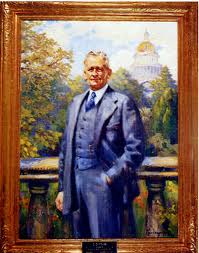 executives California has ever had.
executives California has ever had.
“Long service in the Assembly and eight years as the presiding officer of the Senate had given him invaluable experience in understanding the intricacies of California government,” say H. Brett Melendy and Benjamin Gilbert in The Governors of California.
During his four years as governor, Young advocated for and signed legislation creating the state parks system, the highway patrol, the Metropolitan Water District and the state’s Maritime Academy in Vallejo.
As a former lawmaker he was quick to compliment the Legislature for its cooperation:
“The service which any governor can render to his state is largely determined by the legislative sessions during his term in office,” Young said in January 1931, listing 60 enacted during the past four years.
Not surprisingly, Young was a strong advocate for public education and attempted to rein in state spending which routinely eclipsed revenues while creating a commission to examine ways to overhaul the tax system.
In a failed bid for re-election, one of Young’s slogans was “He Left $31 Million in the Treasury.”
Young also was the first governor to examine the working conditions of Mexican agricultural laborers – after a 1928 strike in the Imperial Valley.
He intervened personally in the case of Charlotte Anita Whitney, who was arrested in Oakland in 1919 for making a speech on behalf of John McHugh, an Industrial Workers of the World member. At her trial, she said she’d joined the Communist Party. In issuing Whitney an unconditional pardon, Young said putting her in a cell was “unthinkable,” Time reported on July 4, 1927
An August 1930 study proved the feasibility of the Bay Bridge, which was opened to traffic six years later by Gov. Frank Merriam.
During his term, classes began at the University of California at Los Angeles.
Young also made a short film with Ronald Coleman promoting “talkie” movies and quelled a 1927 riot at Folsom Prison by calling in the National Guard.
His Greatest Achievement
Young, however, counted his greatest achievement as reorganizing state government – a theme he first invoked in his inaugural speech.
Reorganization is also a key part of Gov. Jerry Brown’s current budget and his language isn’t dissimilar to his predecessor in calling for more rational structure in state government.
Young said in January 1927 that while some streamlining required constitutional amendment, lawmakers could easily approve “an arrangement by which the heads or directors of such departments as may now be formed shall be constituted into a governor’s cabinet or council to the end that at regular meetings there may be discussed in orderly fashion the various problems which confront the state.”
Young convened the meetings the last Wednesday of each month, beginning at 9 a.m. and ending at 7 p.m. All meetings were open to the press and public.
“It is not too much to say that California has at last evolved a businesslike procedure in giving direction to state business,” Young told lawmakers in January 1929 after the council had met 17 times.
In 1927, the Legislature approved Young’s proposal to add four new departments — Industrial Relations, Natural Resources, Public Health and Social Welfare – to the state’s existing five.
Two years later, Young convinced lawmakers to create departments of Investment, Military and Veterans Affairs, Penology and Vocational Standards.
Young was also a steadfast advocate of long-term planning, repeatedly insisting he and the Legislature needed to build for California’s future.
“We can no longer be satisfied to legislate and govern for the current biennium alone,” Young told lawmakers in January 1929.
“Failure to estimate the development which will take place in our state during the next generation and provide for it by legislation in advance means that the government will soon be out of step with the progress of industry and labor and commerce.”
Leaving office in January 1931, Young touted his policy changes saying that the “hit-or-miss, hand-to-mouth plan of state building that had heretofore prevailed” had been replaced with a 10-year building program not only for higher education and state buildings but also for the highway system which Young noted comprised 6,590 miles, two-thirds of which were “primary roads.”
State Parks
 Citing the state’s “rapid growth and development” and the loss of pristine locales to “private exploitation,” Young urged lawmakers to pass legislation during his first year in office creating a Division of Parks and a Park Commission. The bill was sent to him on a unanimous vote.
Citing the state’s “rapid growth and development” and the loss of pristine locales to “private exploitation,” Young urged lawmakers to pass legislation during his first year in office creating a Division of Parks and a Park Commission. The bill was sent to him on a unanimous vote.
A survey was conducted of 323 potential park sites by Fredrick Law Olmsted Jr., the famed conservationist, who also created a blueprint for future acquisitions.
By a three-to-one margin, voters approved a $6 million bond measure the following year. The funds were to be matched dollar for dollar by private funds to purchase sites.
As he left office, Young reported further acquisitions along the Redwood Highway in Del Norte and Humboldt counties.
The park commission was also studying purchases of Castle Crags near Lake Shasta, Mount Diablo and Point Lobos, south of Carmel, he said.
Today, the state’s 278 parks comprise more than 1.3 million acres, 280 miles of coastline, 625 miles of lake and river frontage, 3,000 campsites and 15,000 miles of trails.
Early Life
Born in Lisbon, New Hampshire, Young and his family moved to Butte County when he was one year old, where he attended grammar school. Another family move took Young to San Jose and then Santa Rosa where he completed high school in 1886, earning a teacher’s credential the following year.
After graduating from the University of California in 1892, he became vice principal of Santa Rosa High School.
In 1893, he became an English teacher at Lowell High School In San Francisco, where he remained for 14 years.
Founded in 1856 as the Union Grammar School, Lowell is the oldest high school west of the Mississippi.
It was named in honor of poet James Russell Lowell a year after Young arrived.
Philosopher Josiah Royce was a graduate in 1871.
Among some of the graduates during Young’s tenure were Walter Haas, chair of Levi Strauss Co.; John Cahill, president of Cahill Construction; Theodore Solomons, explorer of the High Sierra, Aurelia Henry Reinhardt, president of Mills College for 27 years; and cartoonist Rube Goldberg.
Driven and intelligent, Young’s students called him “C-Square” because he went by “C.C.”
Young married Lyla Vincent of San Francisco in 1902. They had two daughters, Lucy and Barbara.
In 1904, Young and Charles Mills Gayley authored a textbook, English Poetry: Its Principles and Progress. Melendy and Gilbert say the 600-page tome “became well known as a standard text in California schools.”
Included is “The Vision of Sir Launfal,” a poem by the high school’s namesake. The textbook’s first chapter begins:
“Poetry is one of the arts. Art exists because nature so often is not perfect; and because, even when she does seem to be perfect in form or in color, in sound or in movement, or in the conduct of life, she is limited to the place and the time and the witness.”
The 1906 earthquake brought Young’s teaching career to a close.
In 1905, during a break in teaching, he joined the new real estate development firm of Mason McDuffie, which helped build the Claremont Hotel, Berkeley’s Northbrae neighborhood and St. Francis Wood in San Francisco in 1912.
One of the principals, Duncan McDuffie, was Young’s fraternity brother at Phil Delta Theta. Except for his four years as governor, Young worked there until 1944.
A mountaineer, McDuffie became president of the Sierra Club in 1928, advocating for his fraternity brother’s state parks plans. He also led Save the Redwoods, which helped preserve several pristine stands. The 13,282-foot Mount McDuffie in the Sierras is named after him.
In the Assembly
Young was elected to the Assembly in 1908. The 1909 session began to loosen the stranglehold of Southern Pacific Railroad on the Legislature.
In the Story of the Session of the California Legislature of 1909 by Franklin Hichborn, on 11 key test votes, Young is shown voting “for reform” 11 times.
Young also angered his “machine” owned political colleagues by backing an anti-racetrack gambling bill that threatened to shutter a machine-protected gambling establishment in Emeryville.
Young became a political ally of Hiram Johnson, elected governor in 1910.
Johnson and the work of like-minded legislators led to creation of the initiative process and the right to recall and referendize, constitutional amendments approved by voters in a special election in October 1911.
Young was the lower house author of a measure that same year giving Californians the right to vote for the candidates of their choice on uniform secret ballots.
Young did not campaign for speaker, Hichborn says in his Story of the Session of the California Legislature of 1913.
Of the five candidates for speaker, four were progressive Republicans. Young said he didn’t want to be considered unless none of the other progressive candidates could be agreed on.
“Significant indication of the character of his candidacy is found in the fact that although Young was elected speaker at noon of Monday January 6, San Francisco morning papers of that day announce that Young’s candidacy was not seriously considered,” Hichborn writes.
Younger carried the legislation making county and township elections non-partisan. Judicial elections and those of school officials had been made non-partisan two years earlier.
He was a “satisfactory presiding officer,” Hichborn says.
By 1915, Young was a veteran lawmaker, Hichborn notes in Story of the Session of the California Legislature of 1915.
Of the 80 members of the Assembly, only 20 had prior legislative experience. Of the 20, 12 had only served during the 1913 session. Only eight had served more than a single term and only four – Young being one – had served in the watershed 1909 session.
Hi re-election as speaker insured that the composition of committees would be similar to the previous session.
In 1918, Young ran for lieutenant governor. He was re-elected in 1922.
Becoming Governor
As the gubernatorial election of 1926 neared, there was dissatisfaction in the GOP party with the performance and conservative fiscal policies of Gov. Friend Richardson that seemed to elevate thriftiness above sound policy.
Young took on Richardson in the primary but was losing until Hiram Johnson, now U.S. Senator, returned from Europe and campaigned for him.
Young also won the support of A. P. Giannini who told the employees of his Bank of Italy to campaign for the lieutenant governor.
‘(Giannini) hoped that a governor from the north and a sympathetic state superintendent of banks would reverse the policies that had blocked expansion of the Bank of Italy into Southern California,” writes Jules Tygiel in The Great Los Angeles Swindle: Oil, Stocks and Scandal During the Roaring Twenties.
Young edged Richardson in the primary 327,596 votes to 311,324.
The weakness of the Democratic Party meant Young was assured election in November. He received 71 percent of the vote, a larger margin of victory than any previous governor.
Young’s inaugural also called on lawmakers to begin paying for road building through a fuel tax rather than bonds and for construction of prisons for femal inmates.
“San Quentin is no place for our women prisoners,” Young said.
Riot at Folsom Prison
On November 24, 1927 Young’s mettle was tested by a riot at Folsom Prison in which 1,200 inmates took control of nearly all of the prison, holding five guards hostage.
Young mobilized the National Guard sending Sacramento units to the prison immediately and seeking reinforcements from elsewhere in the Sacramento Valley to buttress local law enforcement. Tanks were shipped from Salinas.
With troops in place, the prisoners were issued an ultimatum on the morning of November 25. Soldiers with bayonets fixed marched into the prison yard to help make the point.
The prisoners backed down, releasing their hostages and returning to their cells.
“The rapidity with which the companies of the California National Guard mobilized and the order and splendid spirit of the guardsmen, was one of the outstanding features of the day,” Young wrote in his report on the incident.
“The National Guard, the peace officers … the traffic officers of the motor vehicle department, the civilians who offered their services, the highway department, and others who furnished automobiles, members of the prison board who arrived early at the scene, and others, all worked together splendidly,” he said.
“It is entirely probable that the show of force they demonstrated was one of the elements which finally convinced the cooler heads among the prisoners that further resistance was useless.”
The St. Francis Dam Disaster
Less than four months later, Young – who lived through California’s worst disaster in 1906 – faced the aftermath of the state’s second worst: The collapse of the St. Francis Dam.
The 180 foot high and 600 foot long structure, built near Saugus and present day Santa Clarita, was constructed by William Mulholland, the chief engineer of the Los Angeles Department of Water and Power.
Just before midnight on March 12, 1928 the newly filled dam burst sending a 12 billion gallon wall of water down the narrow San Francisquito Canyon. As high as 78 feet at its peak, the water scoured 65 miles of the Santa Clarita Valley sweeping away buildings, cars, railroads, bridges, orchards and animals before pouring into the Pacific between Oxnard and Ventura, some 54 miles from the dam.
Over 500 people were killed with damages topping $20 million. Many bodies weren’t recovered. Some came ashore as far south as Baja.
Mullholland resigned and went into self-imposed isolation.
Young convened a commission of engineers and geologists to ascertain the causes of the disaster.
In his charge to the commission, Young noted the importance of dams to the state’s future growth and that they should be built to ensure the safety of those living beneath them.
The first meeting of Young’s commission was on March 19, seven days after the collapse. Within five more days, the commission’s report was completed.
Defective foundations – not shoddy construction — were the cause of the disaster, the commission concluded. The commission’s chair applied for Mulholland’s job at the Department of Water and Power.
During Young’s time in the Governor’s Mansion, his wife hosted visitors in the parlor every Thursday during the legislative session, serving tea and pastries.
They also hosted formal receptions for legislators, their wives, and friends and brought the first radio into the mansion.
A Campaign Contributor Repaid
Young’s campaign benefactor, A. P. Giannini, received the more favorable treatment he was seeking in a new governor.
One of Young’s first appointments in January 1927 was Oakland Mayor Will C. Wood, just beginning his third term as the state’s Superintendent of Public Instruction.
Young named Wood California Bank Commissioner — at twice the salary of state superintendent — even though Wood had no previous banking experience.
Seven days after his appointment, Wood approved a request from Giannini to merge three banks into the Liberty Bank of America.
Shortly thereafter, Wood allowed the new Liberty Bank to merge with the Bank of Italy.
GIannini now had a statewide banking system with 276 branches, the second largest financial institution in the country.
Wood subsequently OK’d Giannini’s merger with the smaller Bank of America in 1928.
Wood remained bank commissioner for three years and at the end of Young’s term, took a job with Bank of America.
Young sought re-election but the mood of voters after the Wall Street crash in 1929 and the depression that followed – plus a loss of support from his Progressive base – cost Young the 1930 primary against “Sunny Jim” Rolph, San Francisco’s mayor. Even though Young noted that he left $31 million in the treasury for his successor.
Young tried again in 1934 but lost to Frank Merriam who had become governor on Rolph’s death in office.
He returned to Mason-McDuffie and served as president of the Commonwealth Club from 1939 to 1940.
He suffered a stroke at his Berkeley home on Thanksgiving Day 1947 and died Christmas Eve. He was 78.
-30-
Filed under: California History
Capitol Cliches Conversational Currency Great Moments in Capitol History News Budget and Economy California History Demographics Fundraising Governor Legislature/Legislation Politics State Agencies
Opinionation Overheard Today's Latin Lesson
Restaurant Raconteur Spotlight Trip to Tokyo Venting Warren Buffett Welcome Words That Aren't Heard in Committee Enough

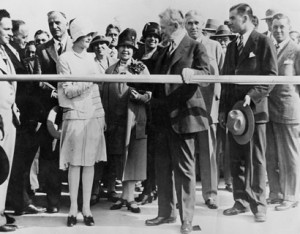

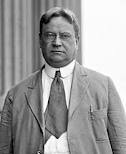
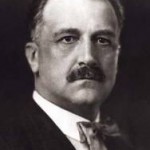
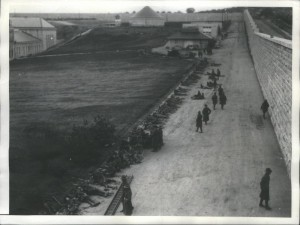
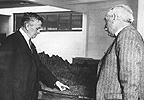
What a wonderful tale. That regime sounds so civil and full of mutual respect among the participants of the day. And to think a Republican created all those government agencies.
FWIW, my late mother-in-law attended Lowell High and never tired of telling people what an outstanding educational facility it was.
And thanks for stuff I never knew: St Francis Dam!!!
Comment by JoAnn Anglin — 4.30.2012 @ 8:44 pm